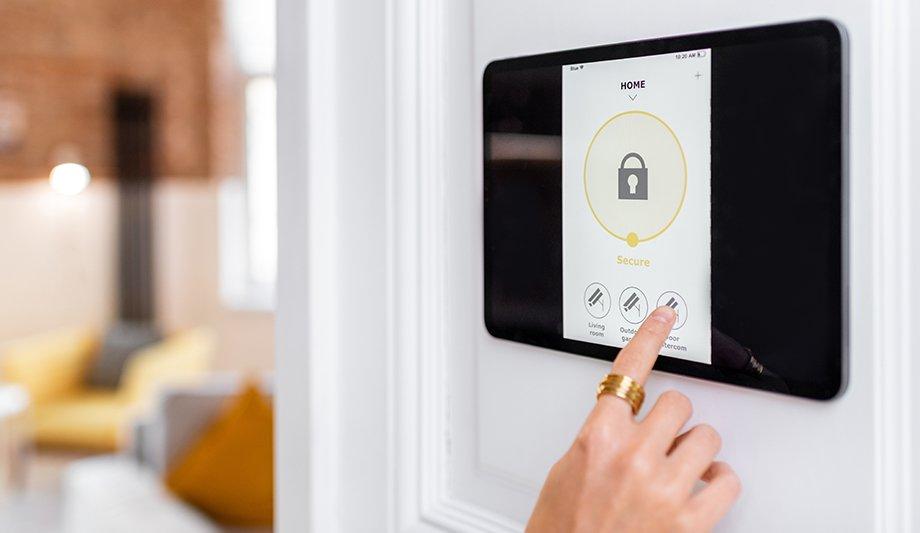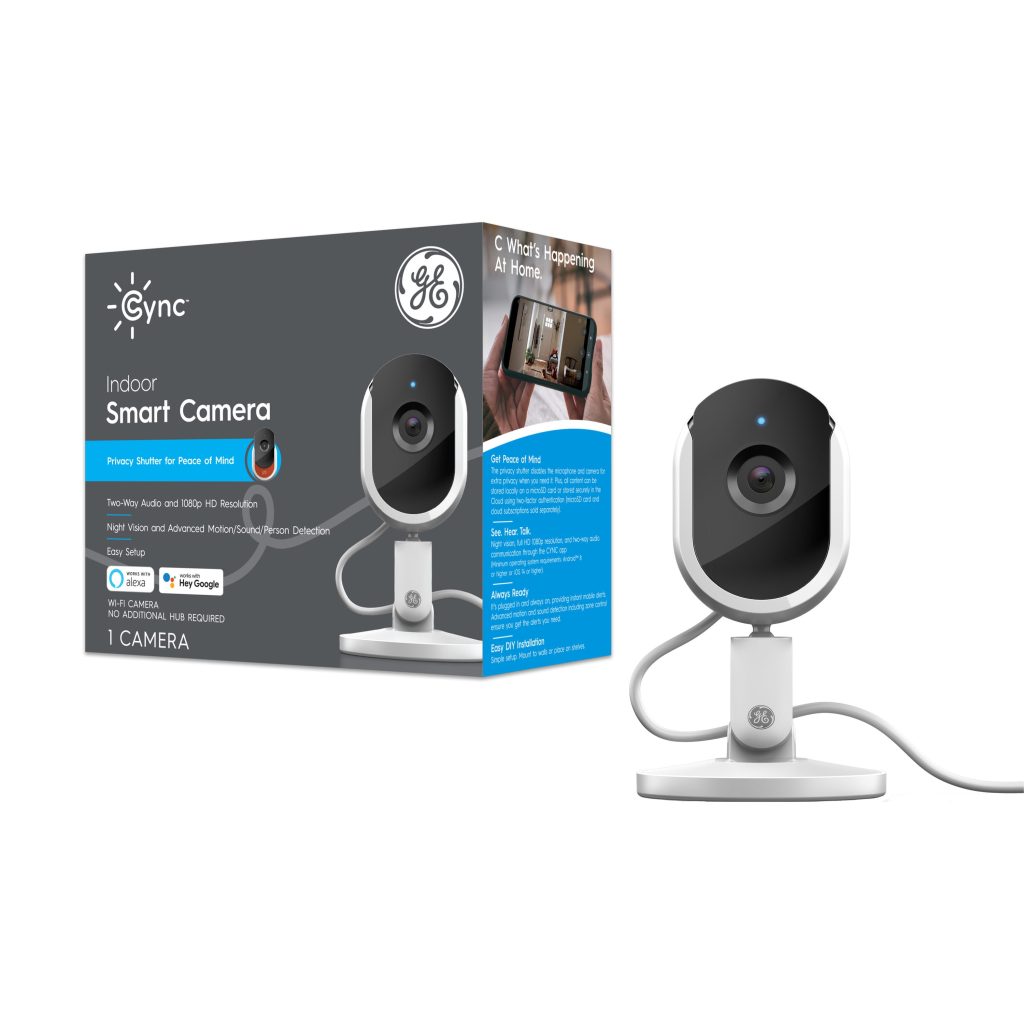Biometric authentication is essential for privacy and security in smart homes. With the growing use of interconnected devices, biometric data provides an additional layer of protection against potential security breaches.
As smart homes become increasingly popular, ensuring the privacy and security of these homes has become a pressing concern. Biometric authentication, which uses unique biological characteristics such as fingerprints or facial recognition to verify identity, offers an additional layer of security that prevents unauthorized access to smart homes.
In a world where cybersecurity breaches are becoming more frequent, biometric authentication provides a reliable and effective method to secure smart homes. This article will explore how biometric authentication works, its benefits and drawbacks, and the challenges to its implementation.

Credit: www.sourcesecurity.com
The Role Of Biometric Authentication In Smart Homes
Understanding Biometric Authentication For Smart Homes
Biometric authentication in smart homes refers to the use of biometric factors such as a user’s fingerprints, voice recognition, or facial recognition to allow access to the device or application. It means that only authorized users can gain entry into the system, ensuring privacy and security.
Here are some things you should know about biometric authentication in smart homes:
- The biometric authentication system captures the physical and behavioral characteristics of the user that cannot be duplicated easily.
- Biometric authentication provides an extra layer of security to smart homes by making it difficult for unwanted guests to gain unauthorized access.
Key Benefits Of Biometric Authentication For Smart Homes
Biometric authentication can enhance privacy and security in smart homes in several ways. Here are some key benefits of biometric authentication:
- Secure access control: Biometric authentication ensures secure access control to smart homes by allowing only authorized users to gain access to the system.
- Convenience: With biometric authentication, users do not need to memorize passwords or carry id cards, making access more convenient.
- Accurate identification: Biometric authentication accurately identifies users, making it difficult for unauthorized users to enter the system or perform unwanted actions.
- Easy setup: Setting up a biometric authentication system in a smart home is relatively easy and straightforward.
Biometric authentication is an advanced security measure that can enhance privacy and security in smart homes. It allows only authorized users to gain access to the system, ensuring that the users have complete control over their smart homes. Biometric authentication is easy to set up, convenient, and accurate, making it an excellent security feature for smart homes.
Biometric Authentication Technologies For Smart Homes
Biometric authentication technologies have integrated into smart homes to secure and safeguard their premises. Unlike traditional authentication methods like password, biometric authentication uses unique physical and behavioral characteristics such as fingerprint, voice, facial recognition, iris, and even gait. These biometric traits are nearly impossible to forge, making smart homes more secure than ever.
This blog post will extensively discuss the different types of biometric authentication technologies for smart homes, and their advantages and disadvantages.
Understanding The Different Types Of Biometric Authentication Technologies For Smart Homes
Biometric authentication technologies for smart homes include:
- Facial recognition: This is the most commonly used biometric authentication technology in smart homes. It uses 3d images of a person’s face to authenticate their identity. Facial recognition technology is highly accurate and can also detect if a person is wearing a mask or disguise.
- Fingerprint recognition: This authentication technology reads fingerprint patterns to determine a person’s identity. It’s highly secure, and fingerprint sensors are increasingly common in most security systems.
- Voice recognition: This technology can recognize a person’s voice and authenticate their identity. The system analyzes voice patterns to match with saved samples and provide access.
- Iris recognition: This technology uses patterns present in the iris of the eye to authenticate a person’s identity. It’s highly accurate and secure.
- Gait recognition: This technology captures and analyzes the way one walks to authenticate their identity. It’s not widely used yet, but it has potential use in the future.
Advantages And Disadvantages Of Biometric Authentication Technologies
Like any technology, biometric authentication has its advantages and disadvantages, as outlined below.
**advantages:**
- Biometric authentication is more secure than traditional authentication methods such as passwords as biometric features cannot be replicated.
- It offers convenience, as a user does not need to remember any passwords or fumble with access cards.
- Biometric authentication is versatile and can be used across different devices and applications.
- It’s cost-effective in the long run since users don’t need to reissue or replace lost access cards or change forgotten passwords.
**disadvantages:**
- Biometric authentication gadgets are still relatively expensive compared to traditional authentication methods.
- Biometric data can be vulnerable to theft and misuse, leading to privacy and security concerns.
- Sometimes the biometric authentication system may fail to authenticate the user when there is an issue with biometric sensors or when the user’s biometric feature has changed due to aging or injuries.
Biometric authentication technologies are highly effective in ensuring privacy and security in smart homes. While they come with several advantages and disadvantages, their benefits outweigh the costs. As technology advances, the effectiveness and efficiency of biometric authentication systems in smart homes will continue to improve.
Implementing Biometric Authentication In Smart Homes
Biometric authentication is becoming increasingly popular in smart homes, providing enhanced security and privacy for users. Implementing biometric authentication requires careful planning and execution to ensure that the system works correctly and does not interfere with the user’s experience. We’ll explore the steps to take and best practices for implementing biometric authentication in smart homes.
Steps To Take When Implementing Biometric Authentication In Smart Homes
Implementing biometric authentication in smart homes involves a series of steps that ensure the system works optimally. Here are the critical steps to take when implementing biometric authentication:
- Evaluate your needs – determine which areas in your smart home require authentication, and consider the number of users who will use the system.
- Choose the right technology – select the technology that best aligns with your smart home and user needs. There are various biometric authentication options, such as fingerprint, face, voice, and iris recognition.
- Check the compatibility – ensure that the biometric authentication technology is compatible with all your smart devices and platforms.
- Test the system – test the system to ensure it functions correctly and securely before deploying it in your smart home.
- Establish backup authentication methods – establish alternative authentication methods in case the biometric authentication technology fails to work.
Best Practices For Implementing Biometric Authentication In Smart Homes
When implementing biometric authentication in smart homes, the following best practices should be considered:
- Secure data storage – ensure that the biometric data is stored securely to prevent data breaches, and only authorized personnel have access to the data.
- Provide user control – give users control over their biometric data, including the ability to opt-out of the system if required.
- Inform users – ensure that users understand the benefits and risks associated with using biometric authentication.
- Regular system maintenance – regularly maintain the biometric authentication system to ensure optimum performance.
- Compliance with regulations – ensure that the biometric authentication system complies with relevant regulations, such as general data protection regulation (gdpr) and the children’s online privacy protection act (coppa).
Implementing biometric authentication in smart homes is an excellent way to enhance security and privacy. By following the steps and best practices outlined you can ensure that the system works optimally and provides a seamless experience for users.
Frequently Asked Questions Of Biometric Authentication In Smart Homes: Ensuring Privacy And Security
How Secure Is Biometric Authentication In Smart Homes?
Biometric authentication in smart homes is highly secure as it uses unique physical characteristics for identification.
Can Biometric Authentication Be Hacked?
Biometric authentication can be hacked if the biometric data is stolen. Therefore, securing the data is crucial.
What Are The Benefits Of Biometric Authentication In Smart Homes?
Biometric authentication in smart homes offers convenience, improved security, and eliminates the need for remembering passwords or carrying keys.
Conclusion
As smart homes continue to revolutionize the way we live, biometric authentication is becoming an increasingly popular method of ensuring privacy and security. The use of biometric sensors, such as fingerprints or facial recognition, offers a level of convenience and security that traditional security methods cannot match.
However, as with any new technology, there are concerns about privacy and the potential for misuse. It is important for smart home owners to educate themselves on the benefits and risks of biometric authentication and to take steps to safeguard their personal information.
While the technology is not perfect, and there may be limitations and occasional false positives, it is clear that biometric authentication in smart homes has the potential to significantly enhance our safety and security. As we continue to explore the possibilities of biometric authentication, it is crucial to prioritize responsible use and ongoing development of this technology.

